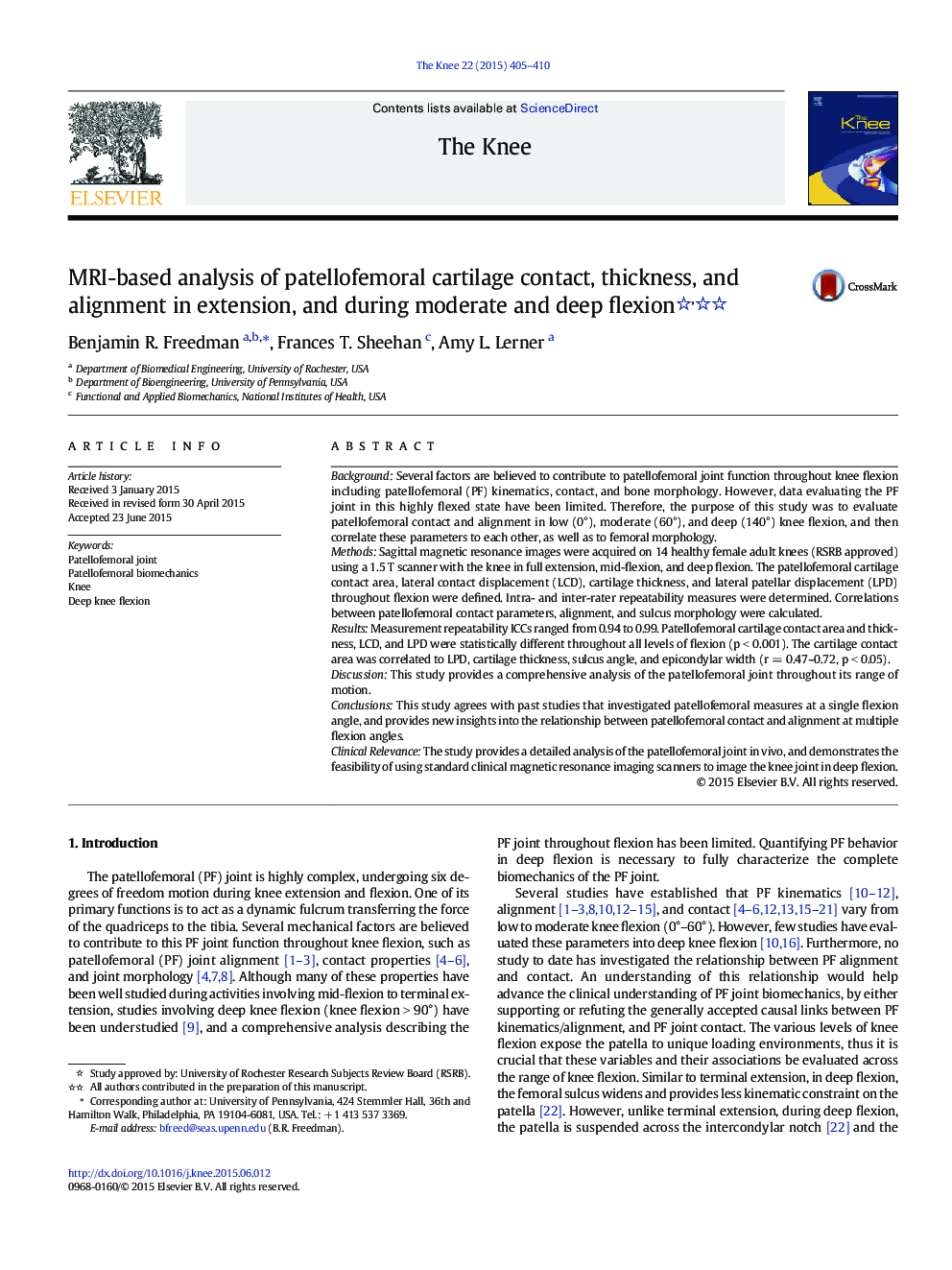| کد مقاله | کد نشریه | سال انتشار | مقاله انگلیسی | نسخه تمام متن |
|---|---|---|---|---|
| 6211191 | 1267207 | 2015 | 6 صفحه PDF | دانلود رایگان |

- Patellofemoral contact and alignment vary and correlate through deep knee flexion.
- Patellofemoral contact correlates to femoral shape in moderate and deep flexion.
- Standard clinical MR-scanners may be used to image the knee joint in deep flexion.
BackgroundSeveral factors are believed to contribute to patellofemoral joint function throughout knee flexion including patellofemoral (PF) kinematics, contact, and bone morphology. However, data evaluating the PF joint in this highly flexed state have been limited. Therefore, the purpose of this study was to evaluate patellofemoral contact and alignment in low (0°), moderate (60°), and deep (140°) knee flexion, and then correlate these parameters to each other, as well as to femoral morphology.MethodsSagittal magnetic resonance images were acquired on 14 healthy female adult knees (RSRB approved) using a 1.5 T scanner with the knee in full extension, mid-flexion, and deep flexion. The patellofemoral cartilage contact area, lateral contact displacement (LCD), cartilage thickness, and lateral patellar displacement (LPD) throughout flexion were defined. Intra- and inter-rater repeatability measures were determined. Correlations between patellofemoral contact parameters, alignment, and sulcus morphology were calculated.ResultsMeasurement repeatability ICCs ranged from 0.94 to 0.99. Patellofemoral cartilage contact area and thickness, LCD, and LPD were statistically different throughout all levels of flexion (p < 0.001). The cartilage contact area was correlated to LPD, cartilage thickness, sulcus angle, and epicondylar width (r = 0.47-0.72, p < 0.05).DiscussionThis study provides a comprehensive analysis of the patellofemoral joint throughout its range of motion.ConclusionsThis study agrees with past studies that investigated patellofemoral measures at a single flexion angle, and provides new insights into the relationship between patellofemoral contact and alignment at multiple flexion angles.Clinical RelevanceThe study provides a detailed analysis of the patellofemoral joint in vivo, and demonstrates the feasibility of using standard clinical magnetic resonance imaging scanners to image the knee joint in deep flexion.
Journal: The Knee - Volume 22, Issue 5, October 2015, Pages 405-410